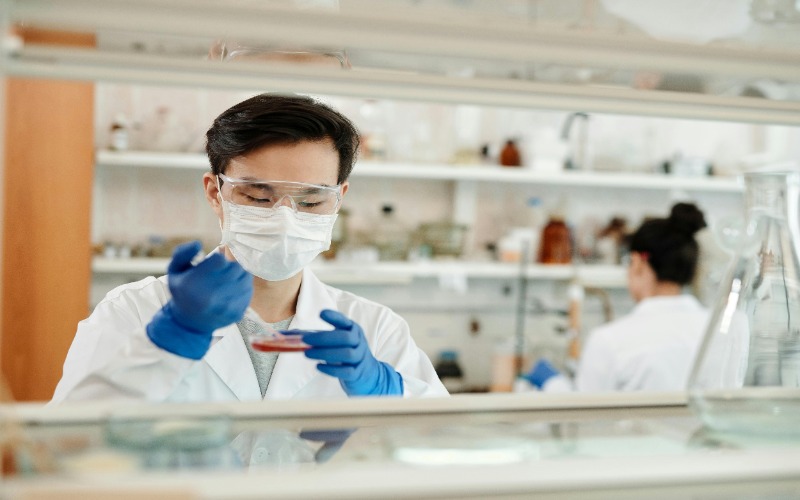The U.S. healthcare system is a study in contrasts. On one hand, the country has borne major medical breakthroughs over the last century. On the other, the U.S. is among a handful of developed countries that do not have universal health coverage.
Americans spend far more per capita on healthcare than citizens of any other country – nearly $13,000 per year – and still, the country ranks last among 11 high-income countries on parameters like access to care (affordability and timeliness), administrative efficiency, equity, and health care outcomes.
In recent years, the health-tech industry has focused on bridging precisely these gaps by working closely with healthcare providers and other stakeholders. Modern healthcare technology is more creative and revolutionary than ever before. The current focus is boosting non-clinical efficiency while improving variability, effective care delivery, and clinical productivity.
Cutting-edge technologies like artificial intelligence (AI) and computer vision are having a noticeable impact on healthcare delivery everywhere, from isolated rural communities to busy urban centers, and this bodes well for a future where everyone in the United States will have access to high-quality healthcare regardless of their socio-economic status. Innovations like wearables, advanced data analytics, and telemedicine are transforming healthcare delivery, access, and experiences nationwide.
For example, AI-powered applications are today helping physicians streamline diagnosis and provide individualized treatment regimens without spending much time and effort.
AI algorithms evaluate healthcare imaging data, which enables faster and more precise diagnosis of conditions like cancer. Furthermore, healthcare providers can identify patients who may develop chronic conditions with AI-driven predictive analytics, enabling proactive interventions that improve patient outcomes and lower healthcare costs.
Telemedicine has also evolved significantly in recent years and is now more widely used and with greater confidence than ever. Patients can receive healthcare services remotely, tossing the need for in-person visits to medical facilities. They can consult with medical professionals via phone calls, chat rooms, or video conferences, which relieves the stress of an already overburdened system.
Patients living in rural or remote areas stand to benefit most from telemedicine, as they often have difficulty accessing traditional healthcare services. When specialized tests like endoscopy shift to primary care settings, specialists can manage the patient remotely, saving time and money. Further, modern telemedicine is useful for managing chronic or long-term illnesses, lowering readmission rates to hospitals, and raising patient satisfaction.
Additionally, disruptive innovation in Generative AI (GenAI) impacts Digital Therapeutics (DTx), revolutionizing how we approach treatment and care. Take personalized therapy, where GenAI models analyze vast amounts of patient data to identify patterns and predict individual treatment responses; this allows medical professionals to tailor interventions to each user, maximizing effectiveness and minimizing errors and hospital visits.
GenAI models can also create educational materials and therapeutic content, including simulations and interactive exercises, tailored to individual needs and learning styles. It can generate realistic simulations of medical conditions or treatment procedures. This can help patients understand their condition better, prepare for procedures, and manage their anxieties. Further, conversational AI chatbots powered by GenAI can provide continuous support and motivation to patients and act as a virtual therapist that personalizes communication, addresses concerns, and encourage adherence to treatment plans.
Finally, GenAI can also be employed to design and generate synthetic data for clinical trial simulations, which can help with accelerated drug discovery and development.
Then there are wearables like smartwatches or bands that today allow individual users to monitor their vital indicators like blood pressure, heart rate, and physical activity, among others. Many wearables and accompanying mobile apps also suggest proactive measures to users to enhance their well-being.
Last year’s Health Information National Trends Survey found that almost one in three Americans uses a wearable device, such as a smartwatch or band, to track their health and fitness. More than 80% of users would share information from their device with their doctor to support their health monitoring.3
This information can, in turn, allow medical professionals to keep an eye on patients who have long-term health issues like diabetes or hypertension.; this not only reduces the need for frequent hospital visits but also offers an effective solution for the shortage of physicians and nursing staff (The Association of American Medical Colleges (AAMC) says that the U.S. is likely to experience a shortage of between 54,100 and 139,000 primary and specialty care physicians by 2033 as the demand increases). As the U.S. population ages, the need for elderly care and remote wellness monitoring will continue to have an increased positive impact.
Finally, the continuous improvement in EHR (Electronic Health Record) systems on aspects like data interoperability, privacy, and security has the potential to transform the way affordable healthcare is delivered to Americans completely. Other emerging technologies like Blockchain can further ensure the confidentiality and integrity of patient data. Administrative tasks like managing medical records and processing insurance claims could be streamlined, cutting down on errors and expenses and thus addressing a major barrier to equitable healthcare access.
Modern technologies transform how healthcare is delivered in the U.S. and offer never-before-seen opportunities to improve healthcare access, affordability, and patient outcomes. They are visibly changing how Americans access and use healthcare services and are shaping a new system that is much more patient- and outcomes-centric. Healthcare stakeholders will do well to embrace these innovations to address the persistent challenges of U.S. healthcare, ultimately helping raise U.S. healthcare delivery standards at par with the best in the world.










